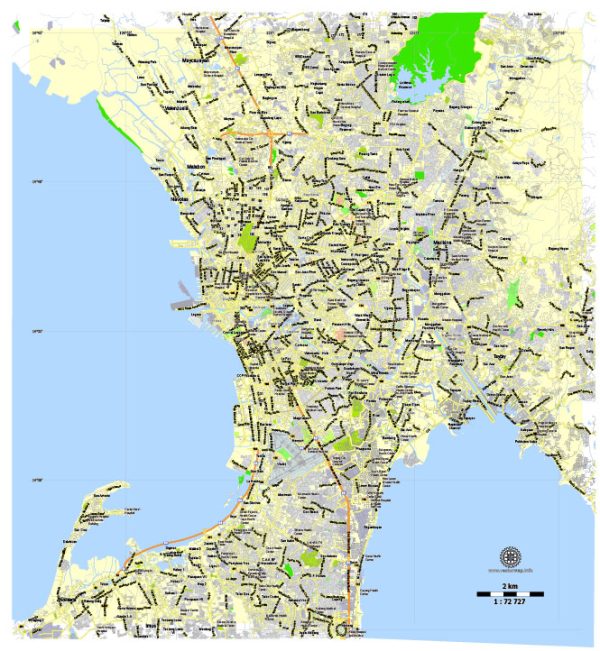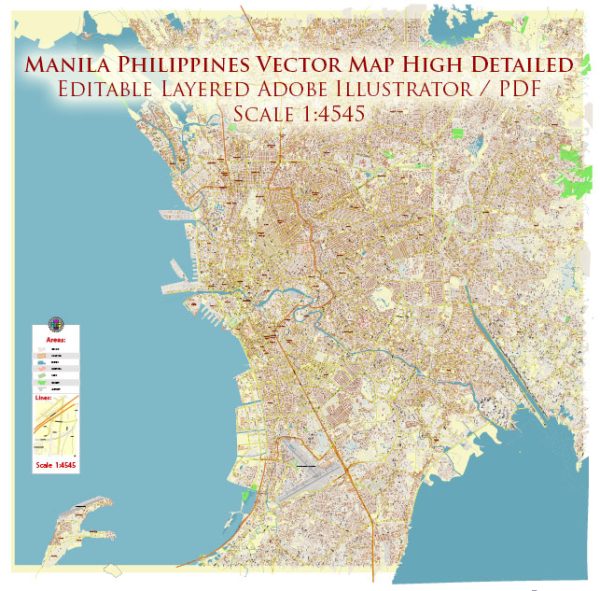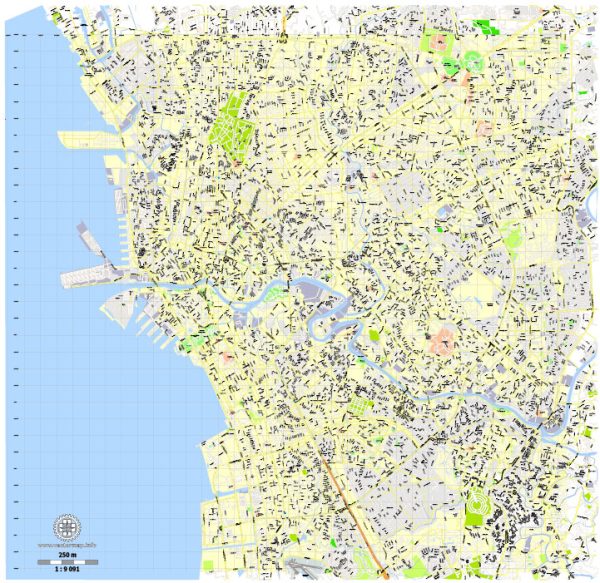Manila, the capital of the Philippines, is a bustling metropolis with multiple city districts and neighborhoods, each offering a unique blend of history, culture, and lifestyle. Here’s an overview of some of the key districts and neighborhoods in Manila:
- Intramuros: Intramuros, meaning “within the walls,” is the oldest district in Manila. It is a well-preserved historic area that dates back to Spanish colonial times. You can explore cobblestone streets, visit Fort Santiago, and see beautiful churches like San Agustin Church. Intramuros is a popular tourist destination and offers a glimpse into the city’s colonial past.
- Binondo: Binondo is known as the world’s oldest Chinatown. It’s a vibrant area filled with Chinese restaurants, shops, and cultural attractions. You can explore the bustling streets, visit Binondo Church, and sample some of the best Chinese cuisine in the city.
- Quiapo: Quiapo is famous for the Quiapo Church, which houses the Black Nazarene, a religious icon highly venerated by Filipinos. The district is a lively market area where you can find various goods, including traditional Filipino herbal medicines, amulets, and religious items. It’s also known for its colorful street life and street food vendors.
- Malate: Malate is a district that offers a mix of nightlife, art, and culture. It’s known for its bars, restaurants, and music venues. You’ll also find cultural attractions like the Metropolitan Museum of Manila and Rizal Park. The neighborhood has a vibrant and diverse atmosphere.
- Makati: Makati is the central business district of Manila and a major financial hub. It’s home to modern skyscrapers, luxury hotels, shopping centers like Greenbelt and Glorietta, and a wide range of international restaurants. Makati is a cosmopolitan area with a thriving nightlife and expatriate community.
- Bonifacio Global City (BGC): BGC is a rapidly developing urban center located in Taguig, just south of Makati. It’s known for its modern architecture, high-end shopping malls, and upscale residential areas. BGC is often considered a symbol of Manila’s economic growth and urban development.
- Pasig: Pasig is a diverse and growing district that offers a mix of commercial and residential areas. It’s home to the Ortigas Center, a major business district, as well as the Pasig River, which has seen significant efforts to improve its environment.
- Quezon City: Quezon City is the largest city in Metro Manila and known for its cultural and educational institutions. It’s home to the University of the Philippines Diliman, as well as various museums and parks. The district also has a vibrant food scene and nightlife.
- San Juan: San Juan is a smaller, more residential district known for its historic sites, including the Pinaglabanan Shrine, which commemorates the Philippine Revolution against Spanish rule. The district has a community-focused atmosphere and is known for its local markets and small businesses.
These are just a few of the many districts and neighborhoods in Manila, each offering a unique experience and reflecting the city’s rich cultural diversity and history. The city’s dynamic character continues to evolve as it grows and modernizes.




 Author: Kirill Shrayber, Ph.D.
Author: Kirill Shrayber, Ph.D.